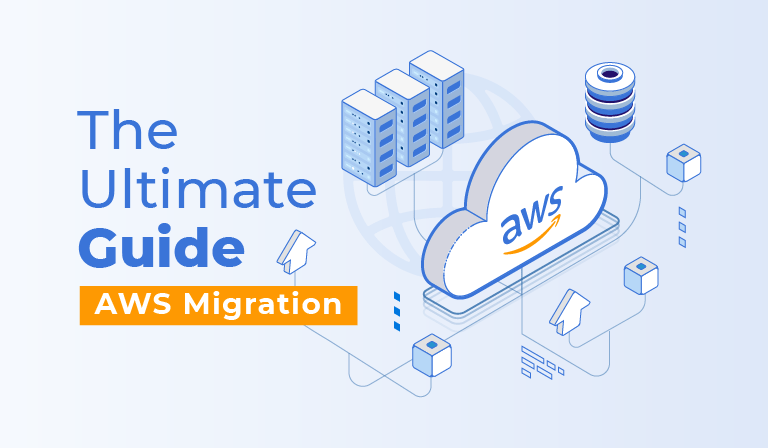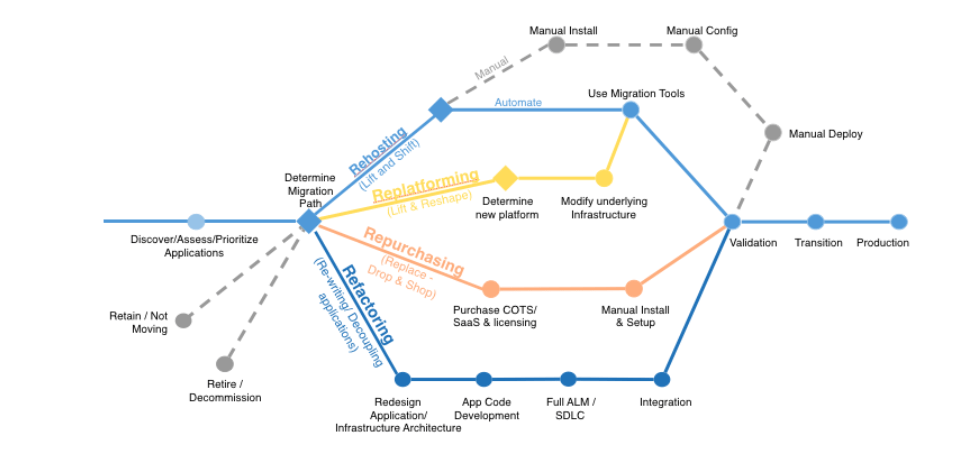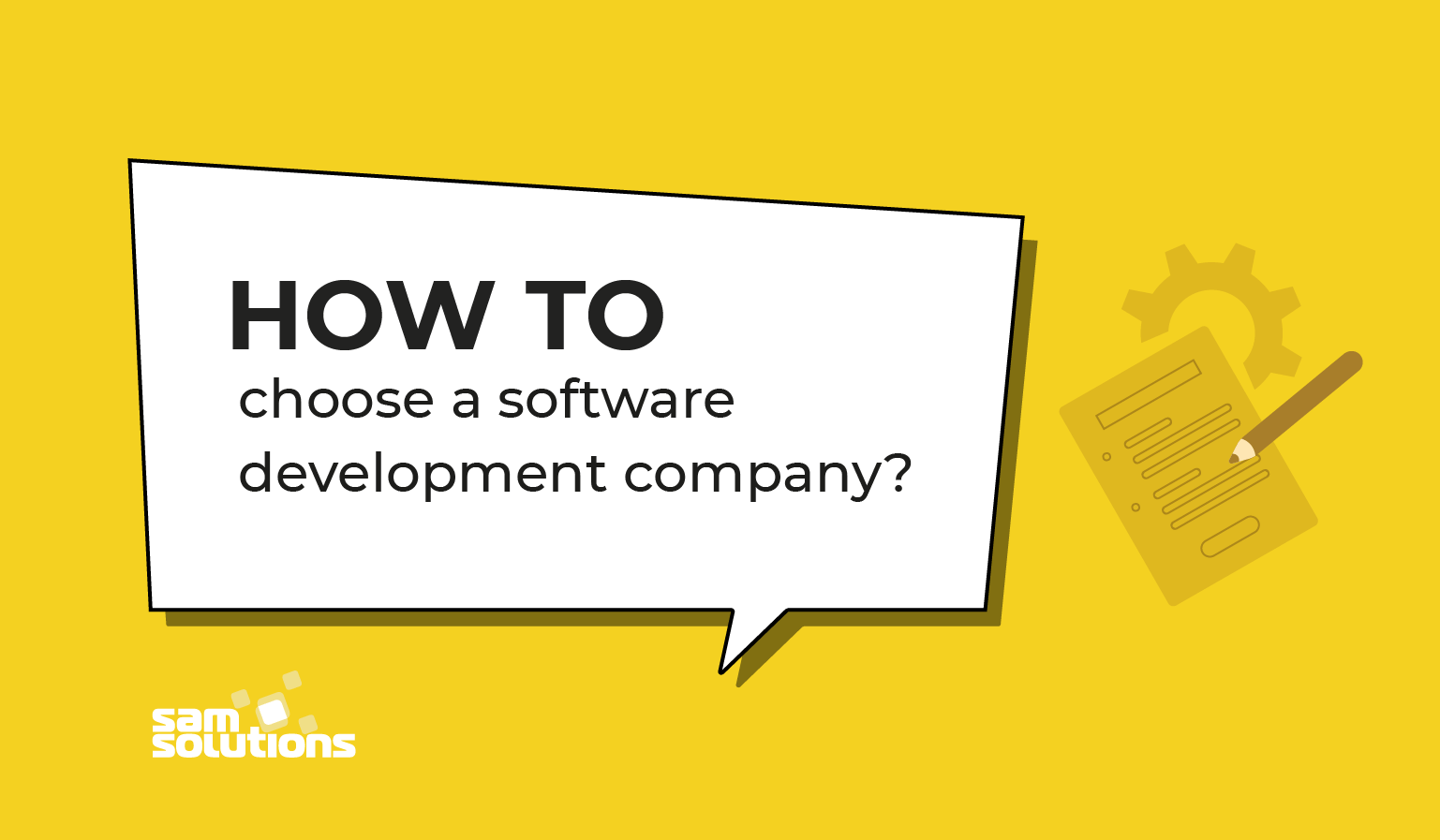
Introduction
Nowadays, cloud computing is getting more and more popular among businesses due to its numerous advantages. It is considered to be the new normal.
AWS (Amazon Web Services) is the most popular and comprehensive cloud platform on the market. As of 2022, AWS comprises products, services, and tools for all kinds of workloads and use cases. Among them are computing, storage, databases, analytics, machine learning, application development, mobile, and IoT. Therefore, if you’re considering migrating to the cloud, it looks like a perfect fit.
At the same time, migrating to AWS can be lengthy and costly, especially if you have a big legacy system. For instance, it took Netflix, the most well-known streaming company in the world, a full seven years to complete its migration.
Moreover, Amazon’s platform offers over 200 products and services and has complex pricing. So choosing the ones you need can be puzzling.
In our ultimate AWS cloud migration guide, we’ll try to help you in this by covering:
- Why businesses migrate to AWS – key benefits
- What are the 4 AWS migration phases
- 6 strategies for moving applications to AWS
- How to select from 6 migration strategies for each workload [infographic]
- Automated migration tools that can ease your migration.
Why Migrate to AWS?
Cloud computing has become a dominating trend as companies of all sizes realized its high business value. Most organizations are no longer in doubt about whether they have to migrate to the cloud. Instead, they are questioning what vendor to choose. And at first they look at Amazon as the world’s industry leader currently holding 33 percent of the cloud computing market.
According to Amazon, there are more than one million active AWS users. Among them are many leading North American, European,and multinational companies across various industries, such as Coca-Cola, Twenty-First Century Fox, Netflix, Reddit, Adobe, Airbnb, Johnson & Johnson, General Electric, Disney, NASA, Dow Jones, Pfizer, AstraZeneca, Barclays, BBC, Formula 1, Samsung, Philips, BMW, Canon, Spotify, Xiaomi, and Nokia.
However, this cloud service is trusted not only by large enterprises, but also by small and mid-sized businesses, including startups. Speaking of numbers, SMEs account for 90% of the AWS customer base.
These figures are impressive, but they still do not give an answer as to why or why not AWS, and why AWS and not Google Cloud or Microsoft Azure. So let’s talk about the advantages of Amazon in detail.
Depth of services. AWS was first on the cloud market so they had a competitive advantage before the others. As the first mover, the company has had more time to perfect its products and create new ones.
But even now, the cloud leader has not stopped and continues to offer new services in the public cloud, such as the cloud data warehouse Redshift, the high-performance relational database Aurora (which is compatible with MySQL and PostgreSQL), and the event-driven, serverless computing platform Lambda for running application code in response to specified events and automated management of underlying computing resources.
Close competitors Google Cloud and Microsoft Azure are playing catch-up, but AWS offerings are still more numerous, diverse, and advanced. With over 200 services for any scenario and budget, Amazon’s platform can cover all your possible needs, beginning with computing, storage, databases, and ending with the Internet of Things,machine learning, and AI.
With such a huge variety of services and options available, it’s easy to get confused which one is best for your business. However, many engineers and IT leaders view the wide range of choices as a positive. The extensive set of AWS services and features was one of the main reasons why Netflix chose this cloud vendor over others.
Cost optimization opportunities. In general, prices among the major market players ( i.e., AWS, Microsoft and Google) are roughly comparable. All three offer slightly different pricing models, discounts, and cuts from time to time in their price war, so a direct comparison is difficult to make.
However, the balance may be tipped in Amazon’s favor by a better economy of scale. Over one million active AWS users do the trick, and due to such a massive scale of operation, the company can continually lower its costs. Therefore, there is no surprise that as of April 2021, AWS has cut its cloud computing prices 107 times since its launch in 2006.
Below is an overview of its pricing philosophy. More customers mean more infrastructure is needed for their servicing. And AWS can save its money because it can purchase and maintain computing resources in large quantities at lower costs and because its costs are spread over a larger number of users. uch savings result in reduced prices for customers, subsequently attracting new customers. Once this cycle completes, a new iteration initiates.
Customers can benefit from such economies of scale not only by receiving consistent price cuts, but also by enjoying the lowest prices in the industry for certain services.
For example, if you need to store infrequently accessed data, such as medical records, broadcast media, or consumer photos and videos, for a long time (for up to 10 years), Amazon S3 Glacier Deep Archive is the cheapest option on the market. Starting at just $0.00099 per GB per month (less than one-tenth of one cent, or about $1 per TB/month), you can retain your archival data for as long as you desire.
On top of that, AWS provides huge opportunities for cost optimization. Amazon recommends thinking about it in advance, before moving to the cloud, so that you could select the most appropriate pricing model for your business right from the start.
However, cost optimization is also available after the cloud migration has been completed. Specifically, by taking advantage of special AWS cost management tools, such as CloudWatch and Cost Explorer, and by using reserved instances and killing unused instances, you can reduce your cloud computing costs significantly.
As an experienced AWS migration partner, we can help your business implement these tools to analyze and decrease your current costs.
Geographic diversification. The geographical location of a data center means a lot, especially when it comes to the cloud. End users value high speed and performance, and even a slight second’s delay in response of your web application to a user’s action (i.e., the latency) can turn them away from your website.
Therefore, it is critical that the data center be as geographically close as possible to your users. In this case, you will be able to deliver the best performance for them.
In some instances, businesses can be required by law to store their sensitive data in certain geographical regions (for example, businesses in the financial sector). If your application is subject to such requirements, you’ll have to take into account the data center location.
AWS servers, located in 245+ countries, comprise the largest and most comprehensive network of cloud infrastructure in the world and can easily meet any of your physical footprint needs.
Netflix’s case study shows that the geographical spread of Amazon’s data centers made it possible for the industry-leading video streaming company to create a better user experience for its subscribers (no matter their location).

Source: Amazon Web Services
What Is AWS Cloud Migration? Four Stages
After you’ve decided in favor of AWS, the next step is to make your migration to Amazon’s cloud as seamless and quick as possible. For starters, it is necessary to understand what the transition to AWS is all about.
AWS migration is the process of transferring applications, databases, or other workloads and computing resources from an organization’s on-premises environment to the AWS cloud (i.e., on-premises to AWS cloud migration), or transferring them from another public cloud to AWS (e.g., Microsoft Azure to AWS migration or GCP to AWS migration).
Other workloads and computing resources include:
- websites
- physical storage
- physical or virtual servers
- data centers
In the first instance ― transferring on-site infrastructure to the cloud ― IT resources and workloads that were on-premises can now be kept and maintained in remote data centers across the globe.
Please note that, for the purpose of this post, by AWS migration we mean only migration from on-premises to the AWS cloud and do not consider migration from another public cloud to AWS.
When migrating to the cloud, there are different deployment models that can be used: public, private, or hybrid (depending on your company’s needs). As with everything in life, there are positives and negatives for each model.
For more details on the main cloud deployment models, see our extensive articles:
AWS Migration Stages
As we can understand from the above definition, migration to AWS cloud is not that simple. It usually requires multiple steps. In particular, according to the AWS migration whitepaper, the cloud transition consists of four recommended stages, as outlined below.
Stage One: Readiness Assessment
For a successful cloud migration to AWS, you should first assess your organization’s current state for readiness. For this purpose:
- inventory your application portfolio to get an understanding of what specifically you will transfer;
- build a business case for migration with the right key performance indicators (KPIs) and a high-level total cost of ownership (TCO) analysis;
- align stakeholders and management on your business goals;
- identify your company’s strengths and weaknesses; and
- create a plan for how you will overcome or at least manage the discovered flaws.
Stage Two: Mobilization
After assessing the readiness of your enterprise and with a clear picture of your current state and IT portfolio, lay the necessary foundation for migration at scale. In particular:
- assign roles and responsibilities inside your team;
- conduct an in-depth portfolio assessment;
- define necessary tools and methods;
- build the AWS target environment, or landing zone; and
- move a small number of applications to the cloud to gain valuable hands-on migration experience.
Stage Three: Migration at Scale
Now, when the patterns, processes, tools, resources, and methodology have been defined and tested during the mobilization phase, it’s time to migrate the portfolio at scale. Usually it is done in waves when, in each wave, the number of applications to be moved and the speed of their transfer (i.e. the migration velocity) increase:
- start from a single, small application, fewer than 10 servers;
- add applications and servers with each subsequent wave;
- make necessary improvements during the process to increase the velocity at later stages.
Stage Four: Operation, Optimization, and Modernization
Finally, after migration of your workloads to the cloud, you are able to operate the applications and optimize them for peak performance. Undertake necessary modernization measures to cut costs, improve efficiencies, and benefit from innovations.
Six AWS Migration Strategies
Your workloads and IT resources can be moved to the cloud in different ways. Amazon recommends six strategies for doing this (the so-called ‘6 Rs model’).
The image below summarizes these approaches. You should carefully consider which strategy is best suited to each workload.

Source: Amazon Web Services
In the majority of migrations, you have the option of rehosting, replatforming, or refactoring. For your convenience, we’ve also compared the three main approaches in the table below:
Table of main AWS migration strategies
| Strategy name | Re-host (aka “lift and shift”) | Re-platform (aka “lift, tinker, and shift”) | Re-factor (aka “re-architect) |
| Essence | Moving applications without changes, as-is. | Moving applications almost as-is, with swapping some components to leverage AWS cloud capabilities (e.g. moving your MySQL database to the cloud and setting it up using Amazon RDS for MySQL, a managed relational database service). | Re-designing and recoding the application, usually using cloud-native features to take advantage of them. |
| Suitable for (when to use) | – large-scale legacy migration; – short time frame to meet business goals (e.g. to launch a product asap, to leave the on-premises data center immediately); and – cloud skills shortage. | – you want to take advantage of additional cloud benefits such as scalability and elasticity | – for projects with a strong business need to add scale, performance, or features that would be impossible to implement on-premises |
| Pros | – the easiest migration process; – zero changes to the application code or architecture; – no disruption to the business processes; and – high speed of migration; – it is possible to leverage automation using special AWS tools, such as AWS Application Migration Service and AWS Database Migration Service (for details, please see below ‘AWS cloud migration tools and services’ section of this article). | This approach represents the golden mean between rehosting and refactoring: – you can benefit from base cloud-native functionality and cost optimization; – it requires less resources and time as compared to refactoring. | – you can take full advantage of cloud-native features; – you’re able to maximize operational cost efficiency in the cloud reaching the lowest monthly spend of the three approaches |
| Cons | – you don’t benefit from AWS cloud capabilities (e.g. Amazon RDS); – you can inherit performance or other issues of your legacy; – more costly to run applications in the cloud this way than in case of the replatform or refactor strategy. | The ability to leverage the AWS cloud migration benefits is more limited than in case of refactoring. | – the most time-consuming, expensive and resource-intensive option |
The other three remaining AWS migration strategies include as follows:
Repurchase (“drop and shop”). Moving to a different product, most commonly to a software-as-a-service (SaaS) platform, which means the replacement of a traditional software perpetual license with the SaaS subscription model. Example: moving from a self-run email system to a SaaS email solution.
Alternatively, you can purchase a replacement for your on-premises workloads in the AWS Marketplace, an online store of cloud-based off-the-shelf applications approved by Amazon. For more details on AWS Marketplace, please see below ‘AWS cloud migration tools and services’ section of this article.
Retire. Turning off applications that are no longer needed.
Retain (re-visit). Keeping some applications on-premises.
How to choose the right AWS cloud migration strategy?
The truth is, there is no single path to a successful AWS migration. While some opt for a lift-and-shift approach, others prefer replatforming or refactoring. Often, the perfect solution is to use a hybrid approach when different workloads of your IT portfolio are moved under different strategies.
First of all, it’s necessary to identify which IT resources and workloads are of low business value (often up to 10% of an enterprise IT portfolio) and should be retired, and which have a high business value and need to be moved to the cloud.
Next, you should analyze which applications generate revenue and therefore need to be invested in to maximize profits and which apps just support your business and should be sustained at the lowest possible total cost of ownership (TCO).
The resources required to replatform/refactor are better invested in revenue-generating applications rather than in business-supporting applications, which can be simply rehosted.
For example, an online retail store is an app that should be invested in, while the timesheet app for logging employees’ working hours is something to sustain.
For more information, see the infographics below that outline simple and effective steps for selecting the right AWS cloud migration approach.
AWS Cloud Migration Tools and Services
No matter which strategy you choose, you can use special AWS cloud migration services and tools to facilitate and speed up each stage of the cloud transition process. Below are the most useful of them, listed and described according to the corresponding AWS cloud migration steps.
AWS Cloud Migration Tools and Services for Stage One (Readiness Assessment)
Cloud Adoption Readiness Tool (CART)
With CART, you can turn your cloud transition idea into a detailed plan based on AWS cloud migration best practices. For this purpose, you will first complete an online survey and receive an assessment report detailing your company’s readiness for migration, including information about your business, people, processes, operations, and security. After completing this survey, you can download a personalized assessment report that will describe your readiness level and what you can do to improve it. An example of the report can be found here.
AWS Migration Hub
The AWS Migration Hub allows you to discover your existing servers, plan migrations, store an inventory of existing IT assets, and track the status of each application migration to AWS cloud.

Source: Amazon Web Services
AWS Cloud Migration Tools and Services for Stage Two (Mobilization)
AWS Application Discovery Service
AWS Application Discovery Service is intended to collect information about an enterprise’s on-premises data centers, including server hostnames, IP addresses, and CPU/RAM utilization, to get a deeper insight into your workloads (which are often interdependent) when planning a data center migration to AWS cloud.
This data can be exported as a CSV file and used to prepare a detailed cost estimate of running on AWS ahead of your migration.
AWS Landing Zone
AWS Landing Zone is a solution for automating the configuration of a multi-account AWS environment. Establishing a security baseline through the creation of core accounts and resources will enable you to run secure and scalable workloads throughout your migration.
AWS Cloud Migration Tools and Services for Stages Three and Four (Migration and Operation)
AWS Application Migration Service (AWS MGN)
AWS Application Migration Service (AWS MGN) is the service recommended to lift and shift your applications to AWS under the rehosting migration strategy. With AWS Application Migration Service, you can automatically transfer your servers and applications from physical, virtual, or cloud infrastructure to AWS.
AWS Database Migration Service (AWS DMS)
With AWS Database Migration Service (AWS DMS), you are able to migrate your on-premises databases to the AWS cloud. The service is designed to accelerate database migration from on-premise to AWS cloud, which can otherwise take months. During the transfer, the source database will be kept operational, thereby minimizing downtime for the data-reliant application.
AWS DMS supports Microsoft SQL Server, MySQL, Oracle, and PostgreSQL both on premises (as source endpoints) and in the cloud (as target endpoints). And it can handle homogenous AWS cloud data migrations, such as Oracle to Oracle, as well as heterogeneous migrations, such as Oracle to Amazon Aurora.
AWS Marketplace
AWS Marketplace is an online store where you can buy software that runs on AWS to gain additional value to current AWS services or to replace some of your on-premises applications as part of the repurchase migration approach. It includes thousands of software listings from independent vendors across different categories, such as storage, operating system, networking, security, databases, DevOps, and machine learning. All software products have approval by AWS, which ensures their reliability and security.
Migrate With SaM Solutions
SaM Solutions has a proven track record of successfully migrating enterprises to AWS. By working with us, you can accelerate your cloud transition journey and avoid unnecessary spending.
FAQ
What is AWS migration?
What are the four phases of AWS cloud migration?
- readiness assessment (assessment of your organization’s current state of readiness for migration);
- mobilization (defining necessary tools and methods and testing them by moving a small number of applications to the cloud to lay the foundation for the migration at scale);
- migration at scale (migrating the IT portfolio to the cloud at scale); and
- operation, optimization, and modernization (operating the transferred applications in the cloud and optimizing them for peak performance; undertaking necessary modernization measures).
Why migrate to the AWS Cloud?
- depth of services – with over 200 AWS services, you can meet all your needs, beginning with computing, storage, databases, and ending with IoT and machine learning;
- cost optimization opportunities – you can benefit from AWS’s economies of scale by receiving price reductions from time to time and by enjoying the lowest prices in the industry for certain services, such as Amazon S3 Glacier Deep Archive for archival storage of infrequently accessed data;
- geographic diversification – AWS servers comprise the most extensive and comprehensive network of cloud infrastructure on the market, and with locations in 245+ countries, the vendor can meet any of your physical footprint requirements; therefore, there is no need to worry about the speed and performance of your application.
How long does it take to migrate to AWS?
In particular, a study by Cloud Security Alliance in 2019 found that cloud migration takes 12 months on average, with only 26% of organizations in the study meeting the expected time frame.
An earlier report from Velostrata and Dimensional (2017) showed that 73% of cloud migration projects take a year or more.
And according to the AWS Prescriptive Guidance, migrations completed within 18 months yield the highest ROI.
Want to make your cloud transition faster? We can help you by providing our expertise and support throughout every stage of migration, beginning from assessing and planning.
From our experience, cloud migration starts earlier than a client usually thinks. And it’s better to make it right from the very beginning by involving a reliable partner who will navigate you through all complexities and help simplify things for you.


